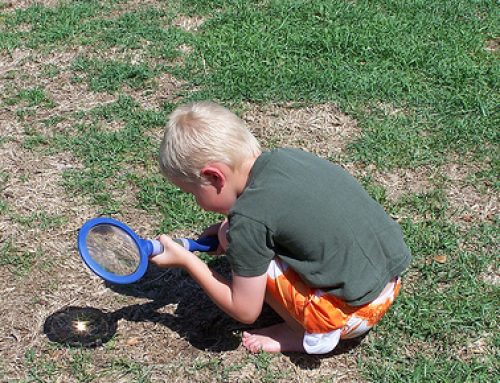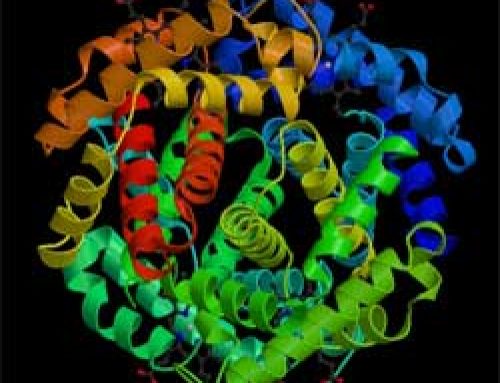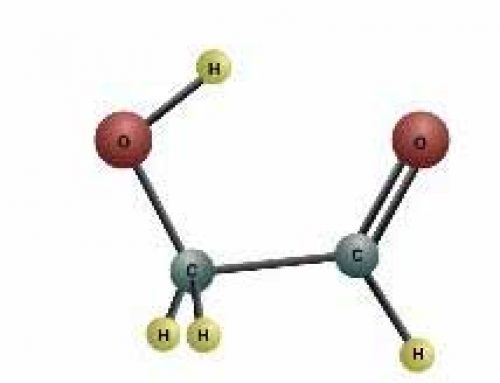
Ice chemistry: Perito Moreno glacier, Argentina (thanks to Argentina’s Travel Guide)
How water freezes into ice
When water gets colder than 32 degrees Fahrenheit or zero degrees Celsius, it freezes into ice.
What is water made of?
From water to steam
More about temperature
All our chemistry articles
As the water gets colder, the molecules of water lose their energy and move more slowly – that’s what it means to be colder. Molecules that move more slowly find it’s easier for them to hook on to each other by sharing electrons.
What is heat?
What are molecules?
Hexagons and geometry
When enough of the molecules hook on to each other, they form a pattern that looks like a bunch of hexagons, all locked in together, and that is ice. Because the molecules are all locked into place, ice is hard and stiff.

Molecular structure of ice
Why ice expands
When water freezes into ice, it takes up about 9 per cent more room than it did when it was water. That’s because when the water molecules are locked together, they are farther apart from each other than when they are bouncing around loose as a liquid.
It’s as if you were standing in a crowd of people, and then you were standing in a crowd of people all holding hands with their elbows straight and their arms sticking straight out from their bodies. The people would be further apart than before.
Salt water takes longer to freeze
Water with salt in it, like in the oceans, can freeze too, but it won’t freeze until it gets much colder than fresh water ice.
More about salt
That’s because the salt molecules arrange themselves around the water molecules like little fences and keep the water molecules from hooking together. But if it gets cold enough, about 28.5 degrees Fahrenheit or -2 Celsius, ocean water will freeze too.
Ice on other planets
Because it’s cold in space, the water in space is mostly in the form of ice. Most of the water in the universe is probably in the form of ice. On Mars, and on the moons of Jupiter, there is also a lot of ice.
More about space
The planet Mars
Ice Ages on Earth
On Earth, the temperature is often just right to have liquid water, which is good because water is necessary for all life on Earth. But still a lot of the water on Earth is in the form of ice. At some times in the past, like during the Proterozoic period about two billion years ago, the whole Earth was probably covered in ice.
The Proterozoic
The last Ice Age
The Little Ice Age
The last major glacial period, when ice covered the Earth as far south as Krakow in Poland, and almost all of Canada, ended about 10,000 years ago, but another glacial period could start again anytime – we don’t really know what makes them start. The glacial periods, when there is a lot of ice, are much longer than the warmer periods like the one we are in now.
Learn by doing – Ice Science Project
More about global warming
An article about water
More about steam
Bibliography and further reading about ice chemistry:




